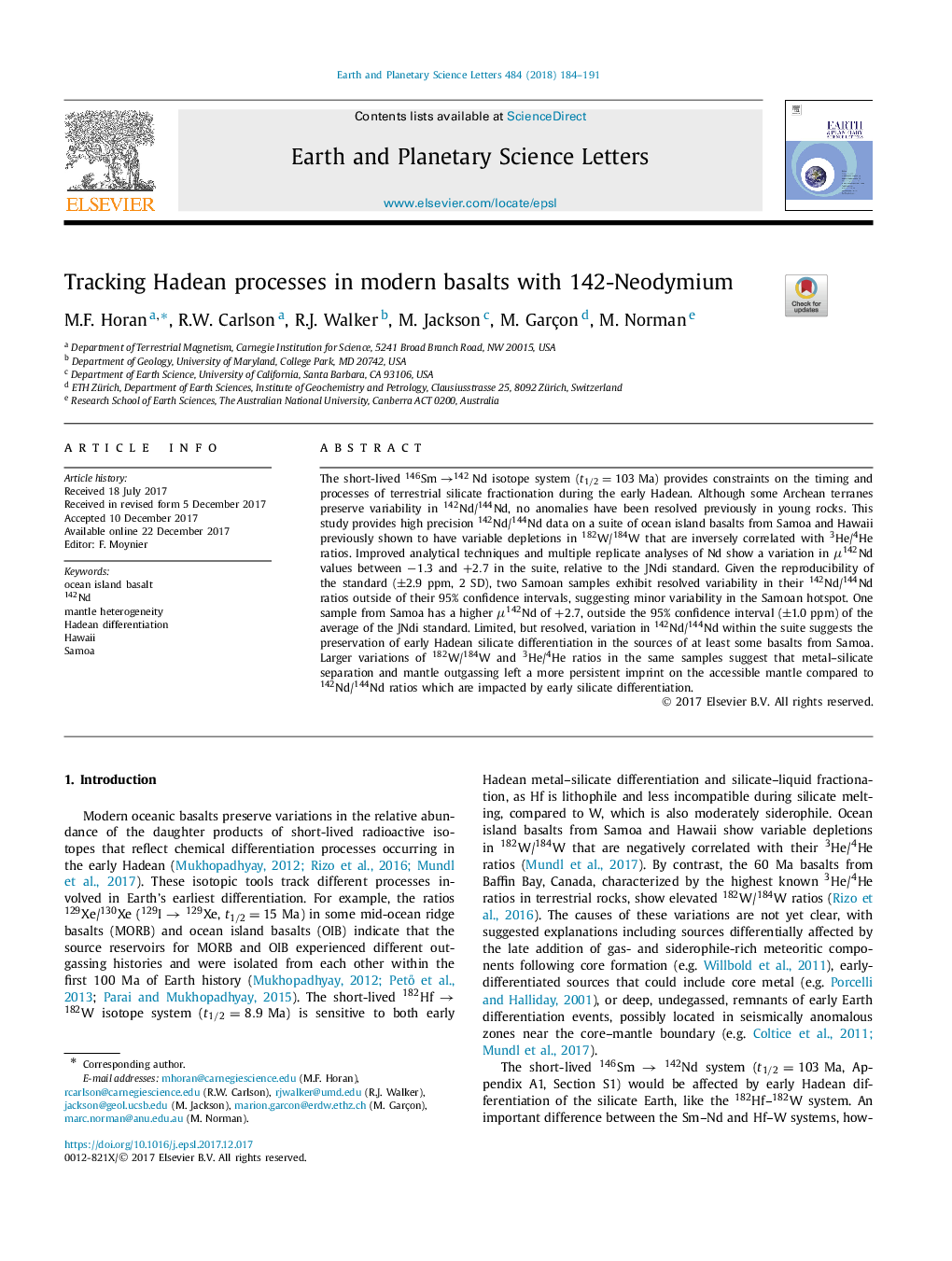| Article ID | Journal | Published Year | Pages | File Type |
|---|---|---|---|---|
| 8907154 | Earth and Planetary Science Letters | 2018 | 8 Pages |
Abstract
The short-lived Sm146â142Nd isotope system (t1/2=103 Ma) provides constraints on the timing and processes of terrestrial silicate fractionation during the early Hadean. Although some Archean terranes preserve variability in 142Nd/144Nd, no anomalies have been resolved previously in young rocks. This study provides high precision 142Nd/144Nd data on a suite of ocean island basalts from Samoa and Hawaii previously shown to have variable depletions in 182W/184W that are inversely correlated with 3He/4He ratios. Improved analytical techniques and multiple replicate analyses of Nd show a variation in μ142Nd values between â1.3 and +2.7 in the suite, relative to the JNdi standard. Given the reproducibility of the standard (±2.9 ppm, 2 SD), two Samoan samples exhibit resolved variability in their 142Nd/144Nd ratios outside of their 95% confidence intervals, suggesting minor variability in the Samoan hotspot. One sample from Samoa has a higher μ142Nd of +2.7, outside the 95% confidence interval (±1.0 ppm) of the average of the JNdi standard. Limited, but resolved, variation in 142Nd/144Nd within the suite suggests the preservation of early Hadean silicate differentiation in the sources of at least some basalts from Samoa. Larger variations of 182W/184W and 3He/4He ratios in the same samples suggest that metal-silicate separation and mantle outgassing left a more persistent imprint on the accessible mantle compared to 142Nd/144Nd ratios which are impacted by early silicate differentiation.
Related Topics
Physical Sciences and Engineering
Earth and Planetary Sciences
Earth and Planetary Sciences (General)
Authors
M.F. Horan, R.W. Carlson, R.J. Walker, M. Jackson, M. Garçon, M. Norman,
